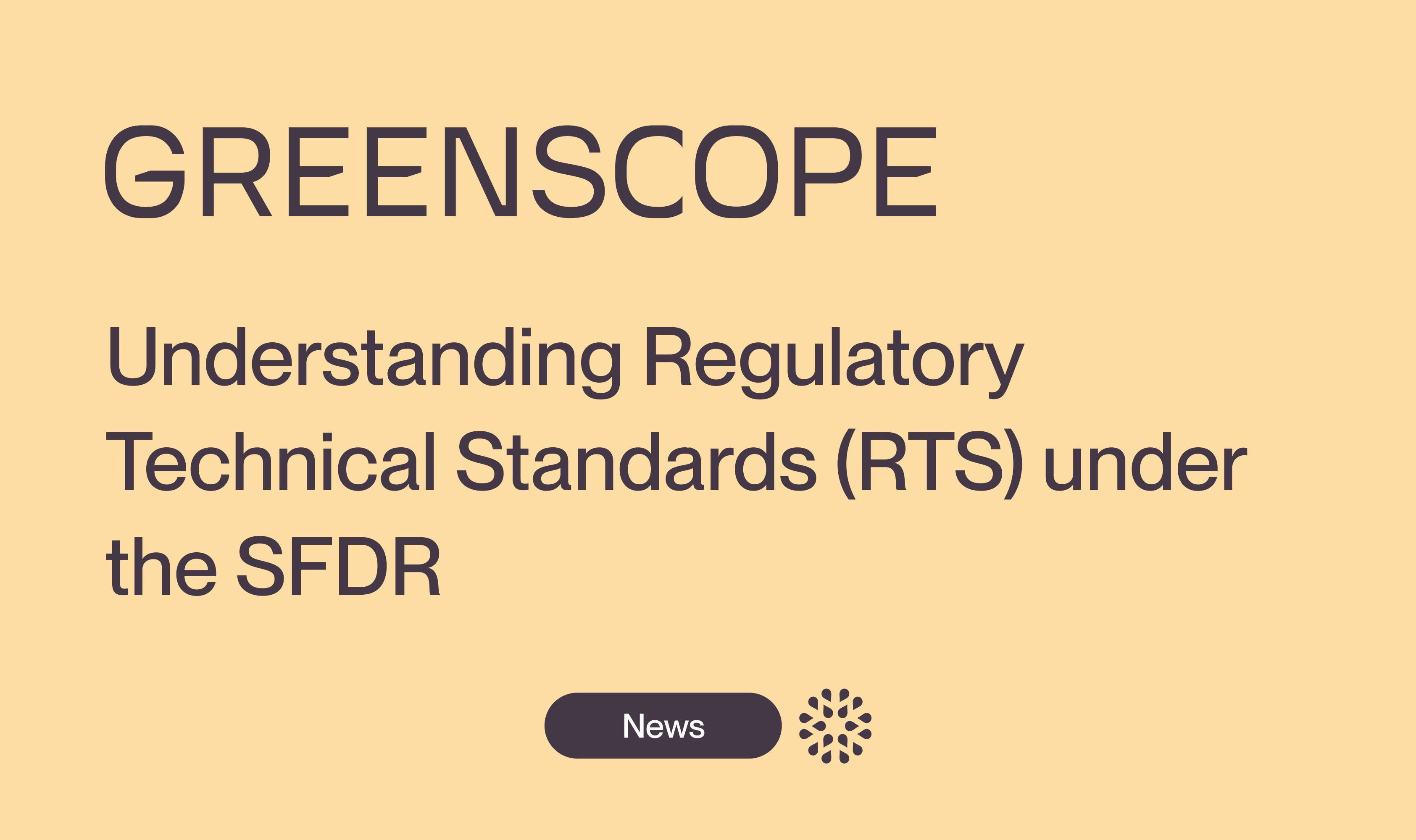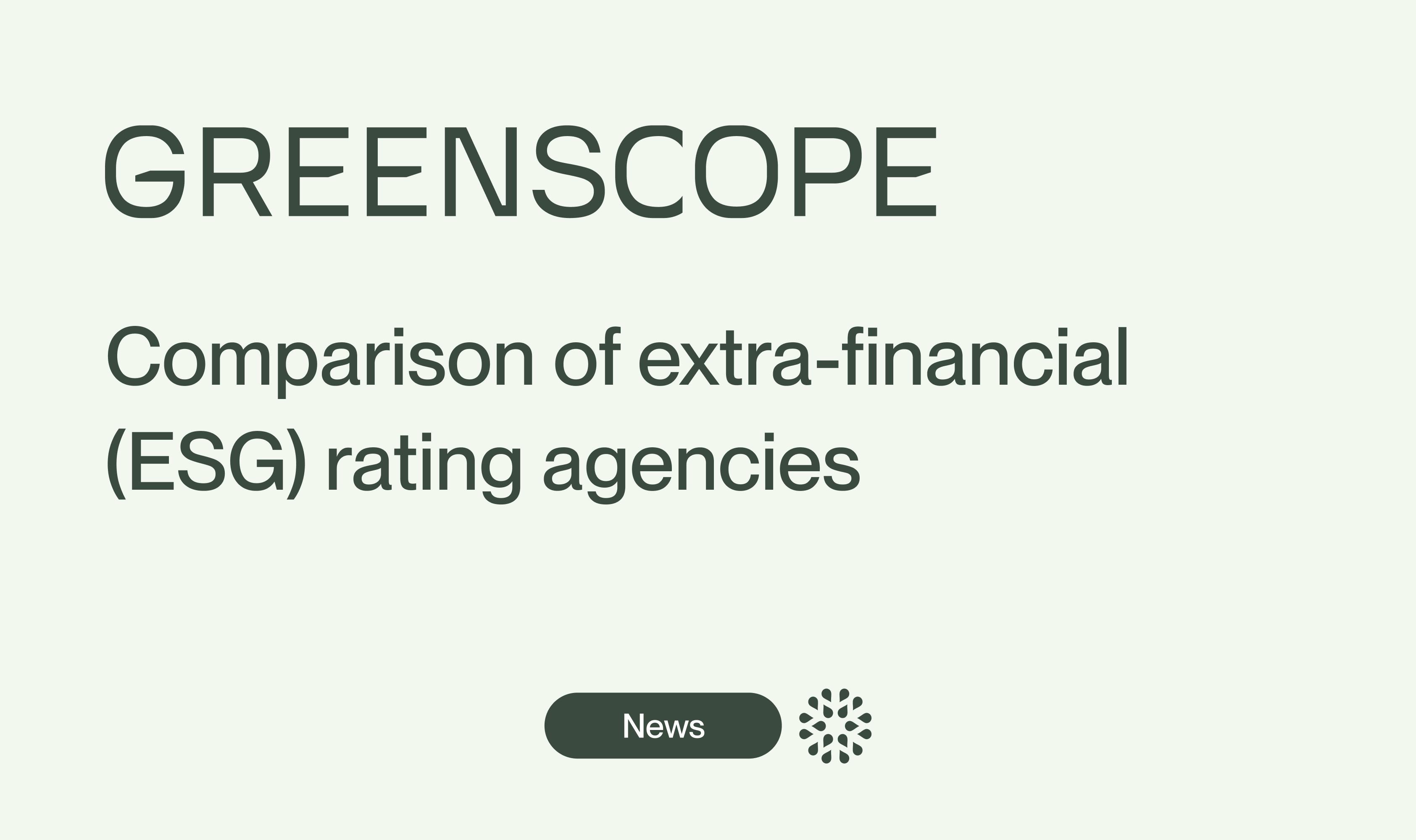Understanding the Regulatory Technical Standards (RTS) under SFDR
Everything you need to know about the RTS SFDR: content, obligations, developments, and challenges for financial professionals

Entering into force on January 1, 2023, the RTS (Regulatory Technical Standards) are crucial to ensure the proper operational implementation of the requirements of the “SFDR” (Sustainable Finance Disclosure Regulation). In this article, find everything you need to know about their content and the latest updates.
What are the RTS (Regulatory Technical Standards)?
The RTS (Regulatory Technical Standards) are operational technical standards that aim to specify the content, methodology, and presentation required for the disclosure of various information mandated by the “SFDR” regulation (Sustainable Finance Disclosure Regulation). They are set out in Delegated Regulation (EU) 2022/1288 of April 6, 2022, and have been in force since January 1, 2023.
🔎 Focus: The “SFDR” regulation of November 27, 2019, is considered the “Level I” of the SFDR framework. In force since 2021, it defines the objectives and general principles. The delegated regulation of April 6, 2022, relating to the RTS, is considered “Level II” as it enables the operational implementation of the regulation.
The RTS provide essential and necessary clarifications for disclosures by financial market participants, notably:
- information relating to sustainability indicators and principal adverse impacts (PAI)
- pre-contractual and periodic information to be disclosed regarding financial products falling under Articles 8 and 9 of the “SFDR” regulation
The RTS delegated regulation includes five annexes that establish standard templates to be used by financial market participants for their disclosures. The aim is to harmonise disclosure practices and make published information easily understandable and comparable.
- Annex I sets out a template for the disclosure of principal adverse impacts on sustainability (PAI)
- Annexes II and III provide templates for the pre-contractual disclosure of information for financial products
- Annexes IV and V provide templates for the periodic disclosure of information for financial products
ℹ️ Reminder: The “SFDR” regulation requires financial market participants to classify their financial products into three categories:
- “Article 6” products, which do not have specific ESG characteristics
- “Article 8” products, which promote environmental and/or social characteristics
- “Article 9” products, which have an explicit sustainable investment objective
What clarifications are provided in the SFDR RTS?
Disclosure of principal adverse impacts (PAI)
The RTS provide important clarifications regarding the procedures for PAI disclosure, the sustainability indicators to be considered, and the methodology for calculating these indicators. They are therefore essential for understanding the concept of PAI and complying with the disclosure requirements.
PAI disclosure must strictly follow the standard template provided in Annex I, which consists of 6 sections. Note that the information to be included in these sections is specified in Articles 5, 6, 7, 8, 9, and 10 of the delegated regulation.
Annex I of the RTS sets out the list of 14 mandatory indicators and 31 additional indicators to be considered by financial market participants.
Disclosure of pre-contractual information on financial products
For financial products classified under “Article 8” and “Article 9”, the RTS specify that the pre-contractual disclosure of product information must strictly follow the templates provided in Annexes II and III of the regulation.
Below is a non-exhaustive list of information that must be included in the disclosure:
- for “Article 8” products, the environmental and/or social characteristics promoted by the financial product
- for “Article 9” products, the sustainable investment objective of the financial product
- whether or not principal adverse impacts (PAI) are considered
- the investment strategy followed by the financial product
- the asset allocation
Articles 14 to 19 of the regulation provide further details on the information to be disclosed in these sections and the calculation methods.
Website publication of information related to financial products
The RTS also specify the information that must be published on the websites of financial market participants concerning products classified under “Article 8” and “Article 9”. The dedicated section on these websites must include (non-exhaustive list):
- for “Article 8” products, the environmental or social characteristics of the product and how they are monitored
- for “Article 9” products, the sustainable investment objective and how it is monitored
- the methods used and their limitations
- the investment strategy of the financial product
Periodic disclosure of information related to financial products
Finally, the RTS also regulate the content of periodic disclosures for financial products under “Article 8” and “Article 9”. These periodic reports must strictly follow the templates set out in Annexes IV and V of the regulation, respectively.
Below are some of the mandatory elements to be included in the periodic disclosure:
- for “Article 8” products, the extent to which the environmental and/or social characteristics promoted by the product have been met
- for “Article 9” products, the extent to which the sustainable investment objective has been achieved
- where applicable, how the financial product has considered PAIs
- the main investments of the financial product
- the product’s performance compared to the reference benchmark
💡To be noticed: In the context of periodic disclosures, financial market participants must provide a historical comparison with the previous reports covering at least the last 5 reporting periods.
SFDR RTS: why they present a challenge for financial market participants
Beyond the regulatory requirement, a solid understanding of the RTS and ESG criteria related to financial products is a strategic issue for asset management companies.
Developing a high level of expertise in analysing the extra-financial performance of products has become essential to ensure their competitiveness and attractiveness in financial markets. In practice, a poorly classified financial product - or one with insufficient justification for its classification - may be excluded by institutional investors.
More broadly, the new SFDR regulation and the RTS encourage financial market participants to improve the ESG performance of their financial products and to demonstrate transparency in how they address sustainability. However, this high level of required transparency can present a real challenge for many actors who may lack sufficient expertise or the necessary tools in the field of sustainable investment.
🔨 Tools: Solutions are being developed to support financial actors in collecting the extensive data required for their SFDR reporting. Greenscope, for example, offers a dedicated solution to help ensure your SFDR compliance.
What are the latest updates to the SFDR RTS?
Since April 2023, the European Commission has initiated a review process of the “SFDR” regulation. The aim is to address various challenges faced by financial market participants in its implementation (significant costs, methodological difficulties, lack of alignment with other EU regulations such as the CSRD or the Taxonomy, etc.).
Two public consultations were launched in 2023 to assess the effectiveness of the current SFDR framework and gather feedback from relevant stakeholders:
- A public consultation on the revision of “Level I” (the SFDR regulation), with a summary report published on May 3, 2024. Various topics are covered, including the revision of current disclosure requirements, interaction with other regulations, and the introduction of a new classification system for financial products
- A public consultation on the revision of “Level II” (RTS standards), which resulted in a final report from ESMA on a new RTS draft published on December 4, 2023. This new RTS draft (not yet adopted) includes, among other changes:
> Some improvements/simplifications to the templates contained in Annexes II to IV of the RTS
> An extension of social indicators and other modifications related to the PAI disclosure framework
These public consultations were followed by the publication of various opinions from key sustainable finance stakeholders, including:
- the opinion of the three European Supervisory Authorities (ESAs) dated June 18, 2024, which proposes, among other measures, a simplification of the templates established by the RTS, the addition of new social indicators, and a clarification of the criteria for demonstrating the “DNSH” (Do No Significant Harm) principle
- proposals from the Platform on Sustainable Finance, published on December 17, 2024, notably concerning a new classification of financial products
- proposals from the AMF (French Financial Markets Authority) dated February 20, 2024
At the same time, the European Commission’s 2025 work programme has announced its aim for a “deep simplification, particularly in the areas of sustainable financial reporting,” and is therefore considering a revision of the SFDR regulation in Q4 2025, guided by this objective of simplification.
Among the main changes currently being considered are the following:
- a “relaxation” of the criteria in Article 9 of the SFDR regulation
- a new classification of financial products into three categories, allowing for a broader range of products covered by the SFDR regulation: “sustainable” products, “transition” products, and “ESG screening” products
- the obligation for products that do not fall into any of these categories to still demonstrate full transparency regarding their environmental and social impact
- a reassessment of the definition of “sustainable investment” and its alignment with the financial product classification system
Financial market participants must therefore remain vigilant regarding these developments, which indicate a significant upcoming revision of the SFDR regulatory framework, particularly the RTS standards.
Our latest articles

CSR News - November 2025
Discover key developments: ongoing projects, standards updates, new official documents.

Comparison of ESG rating agencies: role, methodology, and key players
ESG ratings now shape investment decisions. Learn how extra-financial rating agencies assess sustainability-related issues.

CSR News - October 2025
Discover key developments: ongoing projects, standards updates, new official documents.

Understanding the Regulatory Technical Standards (RTS) under SFDR
Everything you need to know about the RTS SFDR: content, obligations, developments, and challenges for financial professionals



